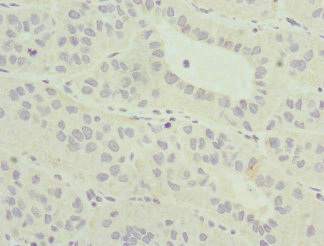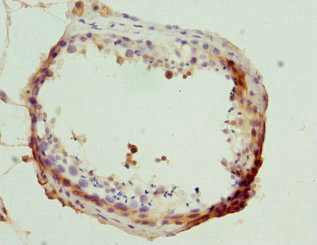Chromatin reader component of the super elongation complex (SEC), a complex required to increase the catalytic rate of RNA polymerase II transcription by suppressing transient pausing by the polymerase at multiple sites along the DNA. Specifically recognizes and binds acylated histone H3, with a preference for histone H3 that is crotonylated. Crotonylation marks active promoters and enhancers and confers resistance to transcriptional repressors. Recognizes and binds histone H3 crotonylated at 'Lys-9' (H3K9cr), and with slightly lower affinity histone H3 crotonylated at 'Lys-18' (H3K18cr). Also recognizes and binds histone H3 acetylated and butyrylated at 'Lys-9' (H3K9ac and H3K9bu, respectively), but with lower affinity than crotonylated histone H3. In the SEC complex, MLLT3 is required to recruit the complex to crotonylated histones. Recruitment of the SEC complex to crotonylated histones promotes recruitment of DOT1L on active chromatin to deposit histone H3 'Lys-79' methylation (H3K79me). Plays a key role in hematopoietic stem cell (HSC) maintenance by preserving, rather than confering, HSC stemness. Acts by binding to the transcription start site of active genes in HSCs and sustaining level of H3K79me2, probably by recruiting DOT1L.







